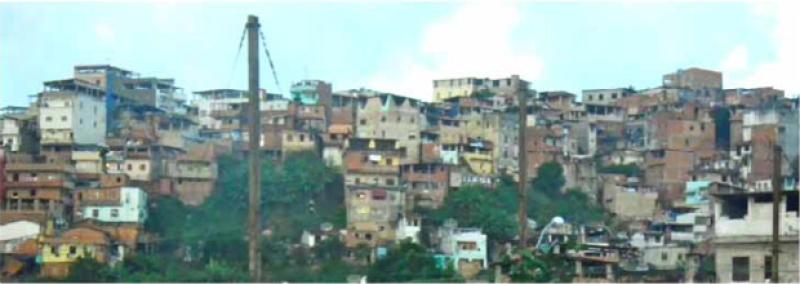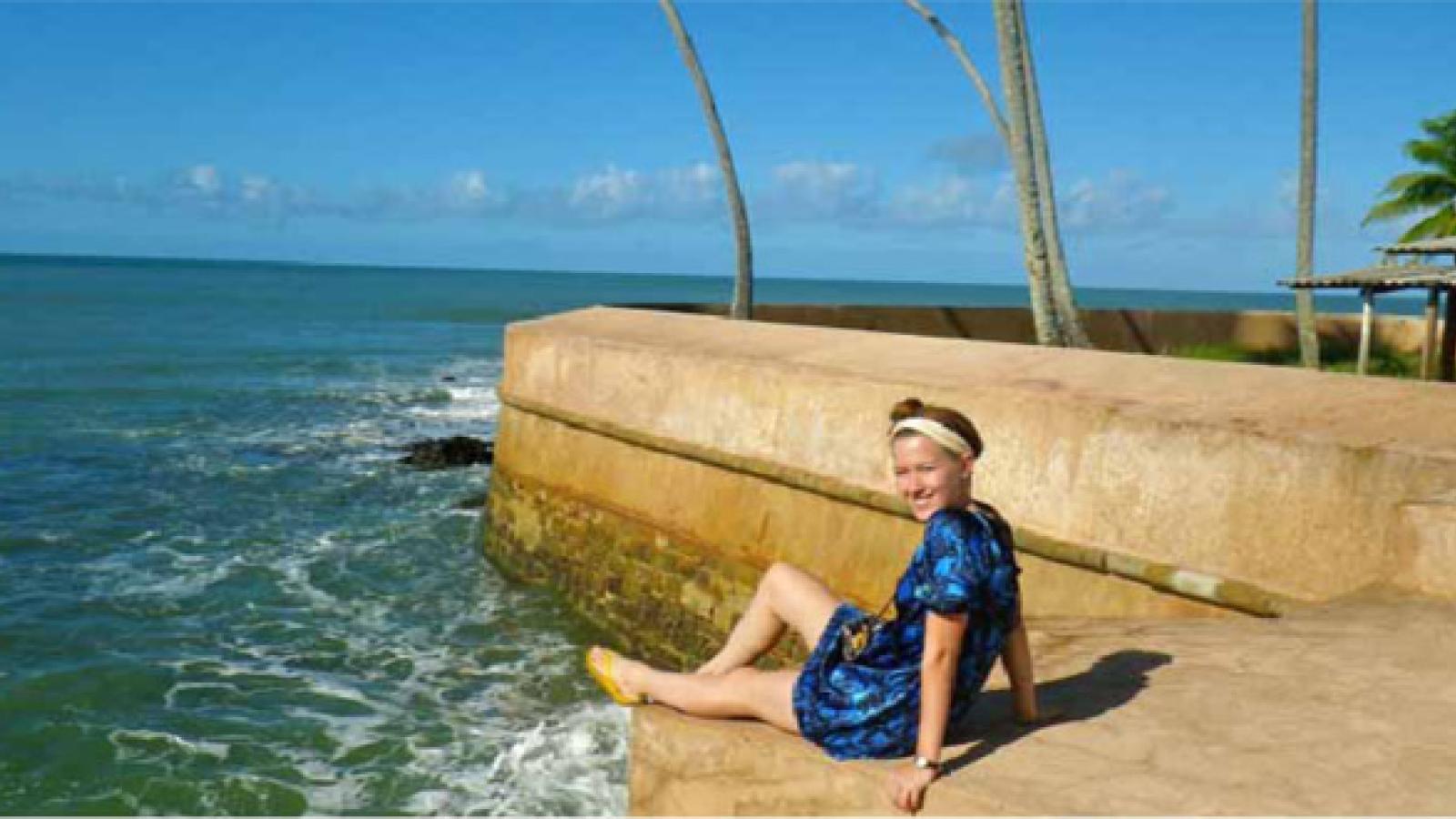Shelby Stults is a senior majoring in Globalization Studies, with minors in Development Studies and Portuguese. She applied for a travel grant through the Arts and Sciences Honors office to fund her research in Brazil during Summer 2013, with the help of her faculty advisor, Prof. Kevin Cox of Geography . She was awarded $6,000 in support of her research! Here is her research grant application as a model for those of you planning to undertake your own research project.
Research Project
Context
Urban informal housing in Brazil, sometimes called favelas, grotas, or baixadas, and identified in the country’s census as housing in ‘subnormal agglomerates’ has long been a part of the urban fabric and a focus of academic interest. The numerous differences between formal and informal living settlements in these urban areas include standards of construction, but the most prominent difference lies in the legal ownership of the land it sits upon; areas of informal housing have typically been the result of land invasions and people living there do not enjoy title to the land. Currently, the majority of academic research only focuses on the informal housing in southeastern cities of São Paulo and Rio de Janeiro, neglecting 8.7 million other subnormal agglomerate residents. For the last severamonths I have been using statistical data from a variety of sources to compare and contrast demographic differences of favela residents from northeastern and southeastern cities. This data has allowed me to draw distinct differences in the median wage, condition of the home, and overall composition of subnormal agglomerate households in the northeastern cities of Salvador, Fortaleza and Recife, and the southeastern cities of Belo Horizonte, Rio de Janeiro, and São Paulo. My research project focuses on the northeastern city of Salvador.
Research Objectives
I want to explore related aspects of favela housing in the city. There are many gaps in the current academic literature. Statistically, more people live in favela housing in poorer cities. This raises questions about Brazilian housing policy: What is that policy with respect to the favelas and what provision is made for housing poorer people? Second is the issue of granting favela home owners rights to land. Why has this been so difficult? Third and finally, I want to explore the question of the stigmatization of favela residents. In Rio, stigmatization comes from images of criminality that don’t apply in Salvador. On the other hand, the fact that the city has been slow to grant tenure rights suggests that other factors might be in play.
Study Site

Obviously one can’t possibly hope to solve the problem of regional variation with respect to informal housing in Brazil in one research visit. The objective, however, would be to obtain more complementary data in a single northern city. Salvador da Bahia would provide a good setting for conducting further research. It is the third largest city (by population), the second largest city by percentage of people living in subnormal agglomerates, and has a vibrant historical development different from that of Rio de Janeiro. Additionally, I was fortunate enough to spend time in Salvador last summer on a previous study abroad trip with Ohio State, and this allowed me to become familiar with the city.
Research Methods
In pursuing my research goals I want to speak to a number of di ff erent people. First are local officials, elected and non-elected, who will be knowledgeable about housing policy at provincial and local levels. It has been di ffi cult to collect a signi fi cant amount of information regarding local policy and how national programs such as Minha Casa, Minha Vida and Familía Bolsa affect informal housing in Salvador. By interviewing officials I will be able to bridge this gap between national policy objectives and results at the local level. Secondly, I wish to interview field directors of NGOs who deal with favela leadership, particularly the Pracatum Social Action Association, which is very active in Salvador. Third are directors of favela resident associations. Every favela has an association and there are 242 that are recognized by the Brazilian census. Pracatum will provide an opportunity since they work with resident associations on a daily basis. Additionally, resident associations will provide a different viewpoint on housing policy and tenure than the local officials. Finally are academic researchers in the planning departments of the Federal and State Universities of Bahia, both located in Salvador, who have conducted research on the Brazilian favela.
The most effective approach to gathering information from these contacts is to conduct and record intensive interviews on a predetermined outline of questions and topics. This format will allow me to pursue unanticipated lines of inquiry. A problem is making contact with favela residents themselves without compromising my safety. What I plan to do is ask selected resident association directors or NGOs to organize small groups of residents with whom I can discuss the issues of housing policy, tenure policy and stigmatization.
In conclusion, the ability to travel to Salvador, Brazil will provide an opportunity to research and analyze many factors of urbanization, subnormal agglomerate policy, and the relationships between informal and formal housing that would not be possible relying only on statistical data. This research trip would allow for a qualitative, anthropogenic perspective that extends into the lives of those living in a vibrant community with cultural, historical, and political implications of urbanization in the past, present, and future.

